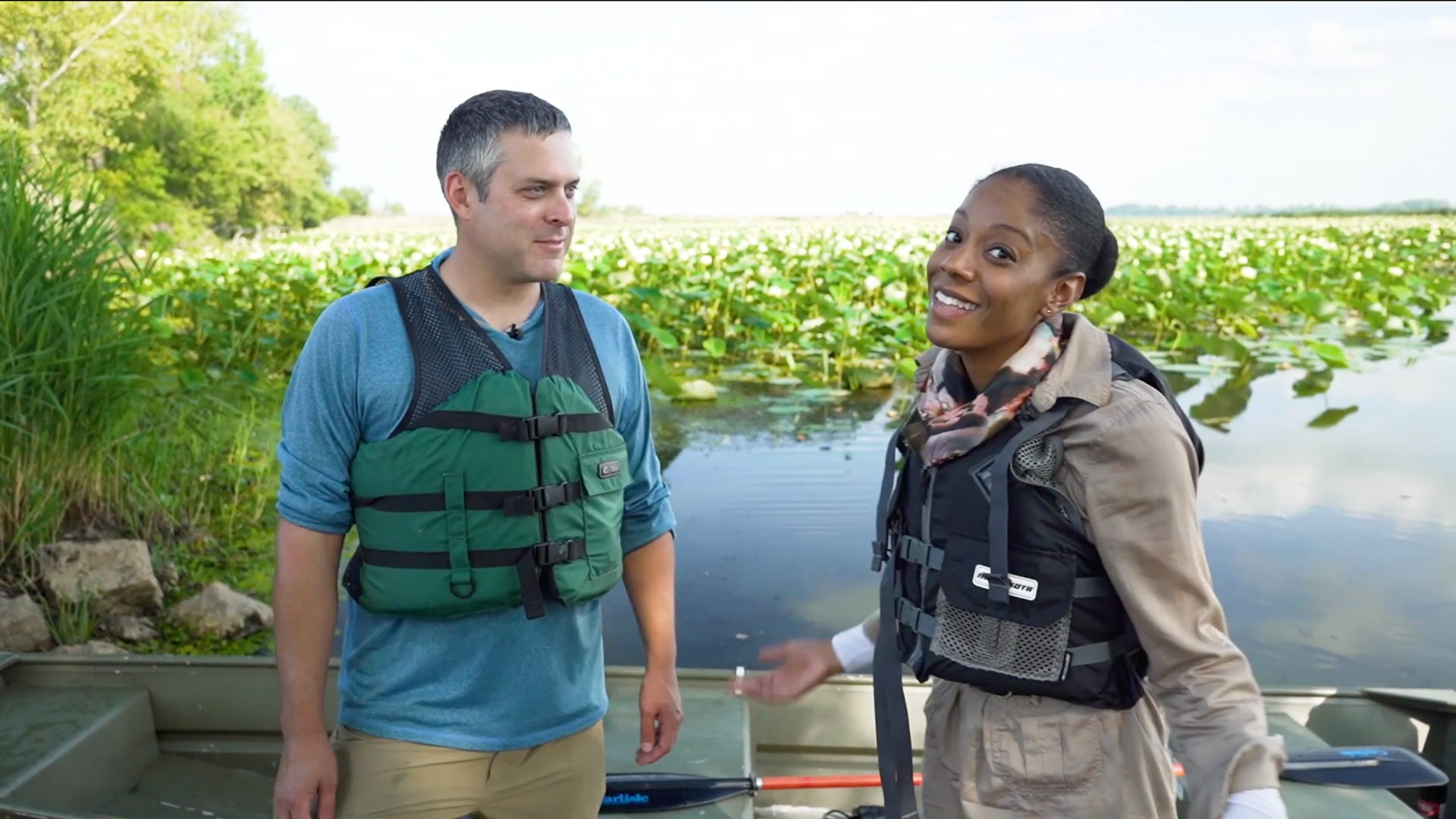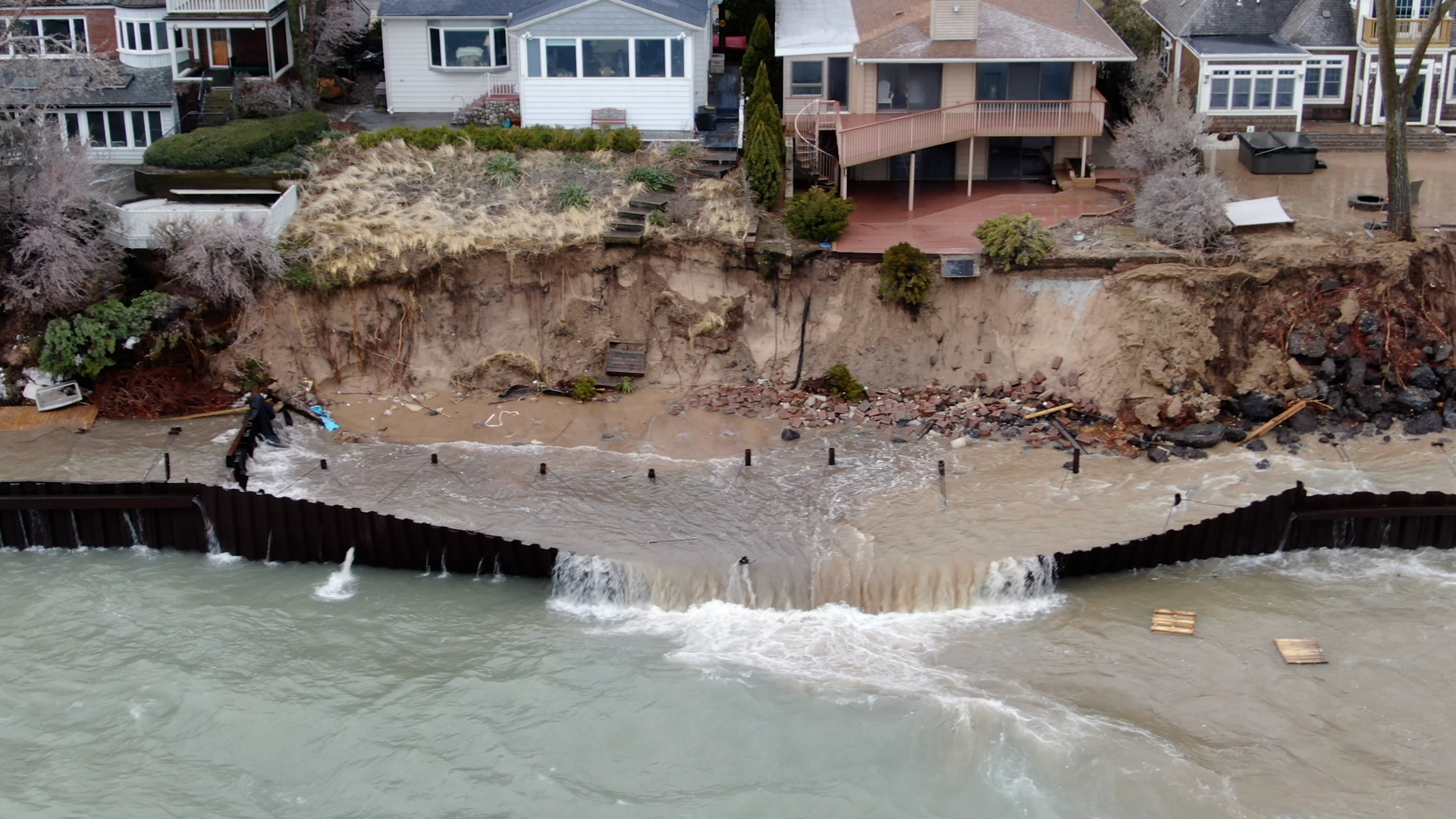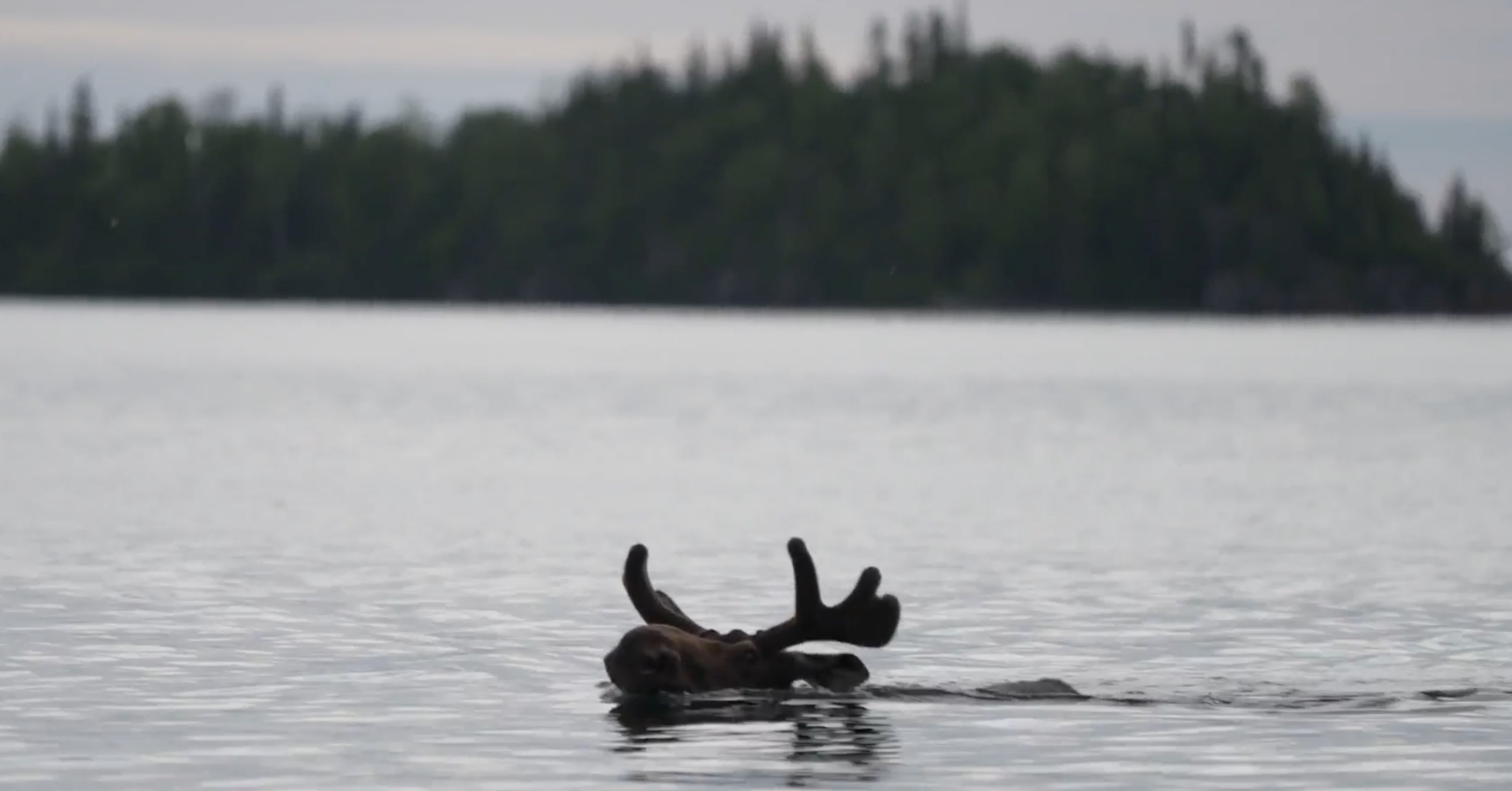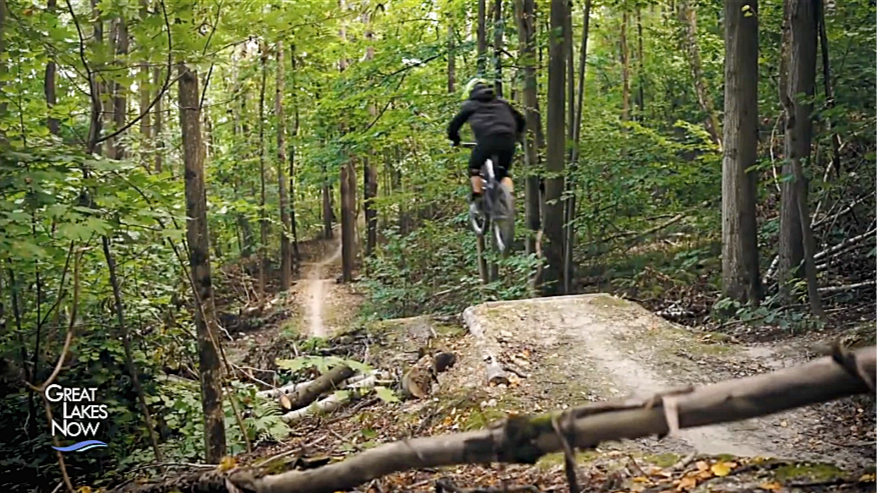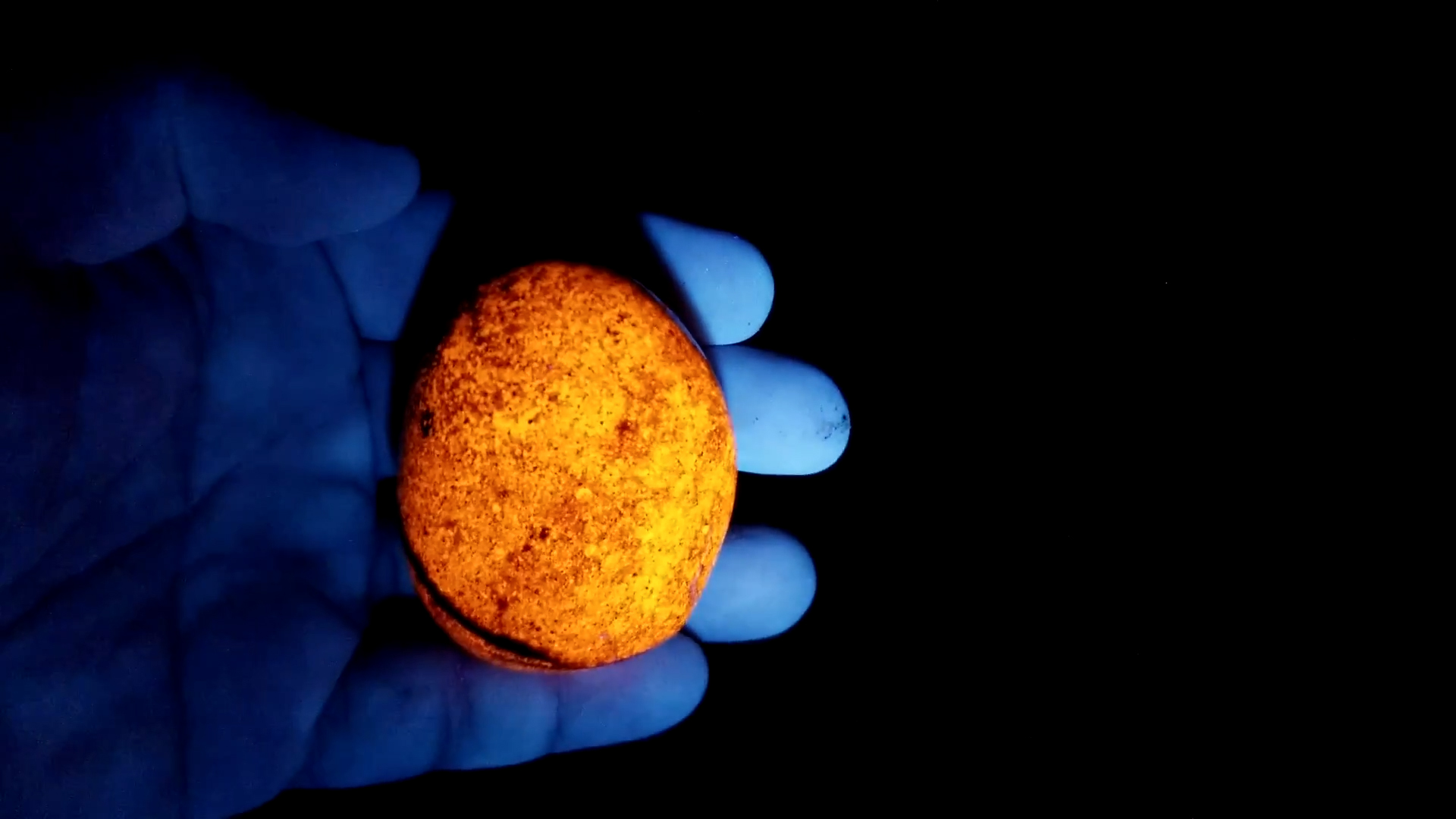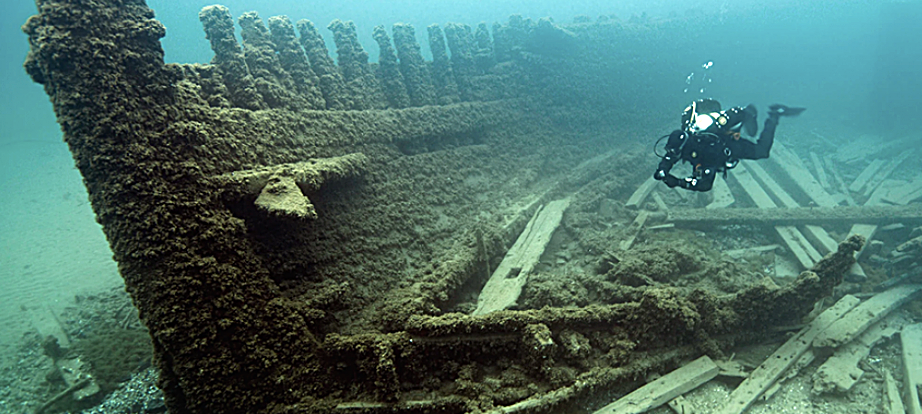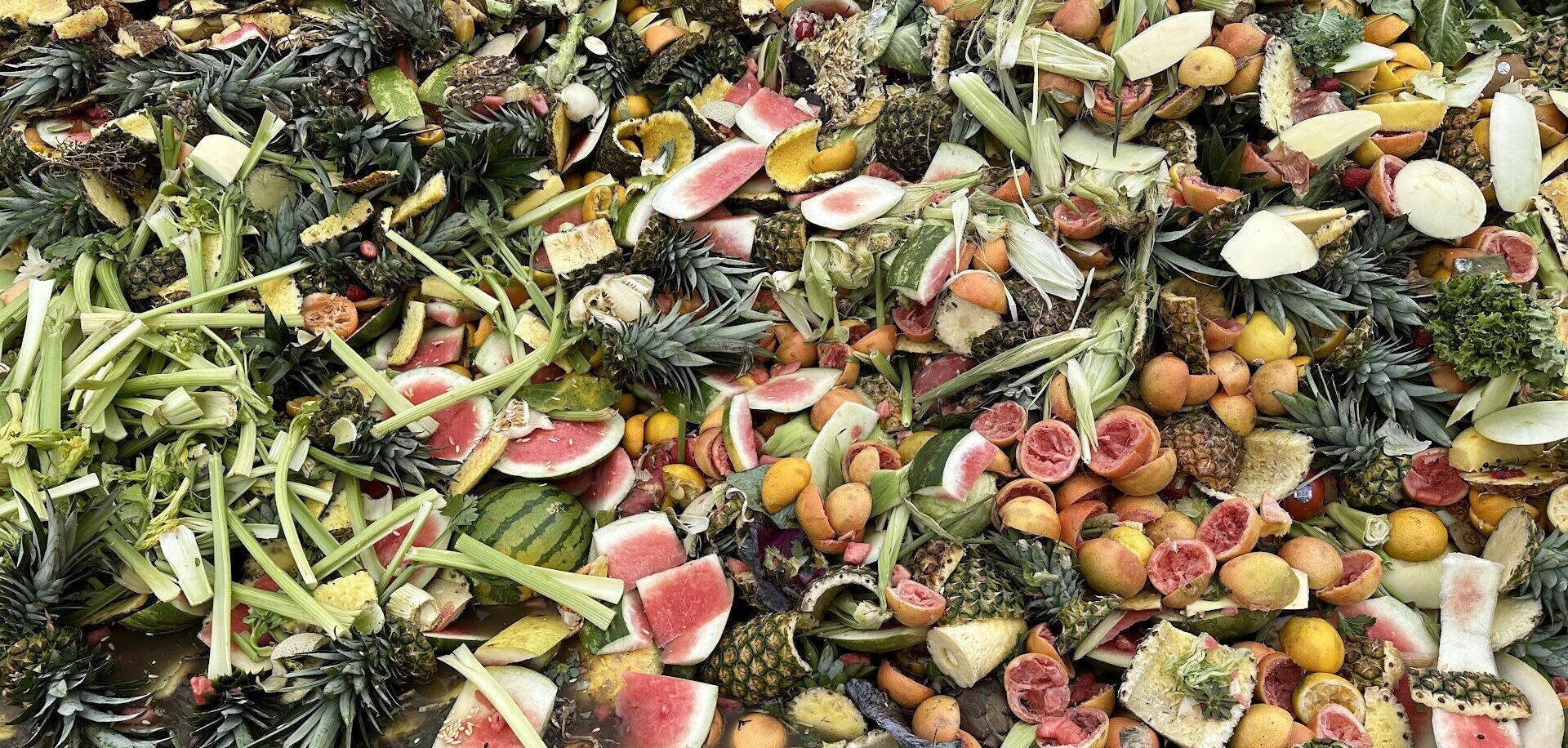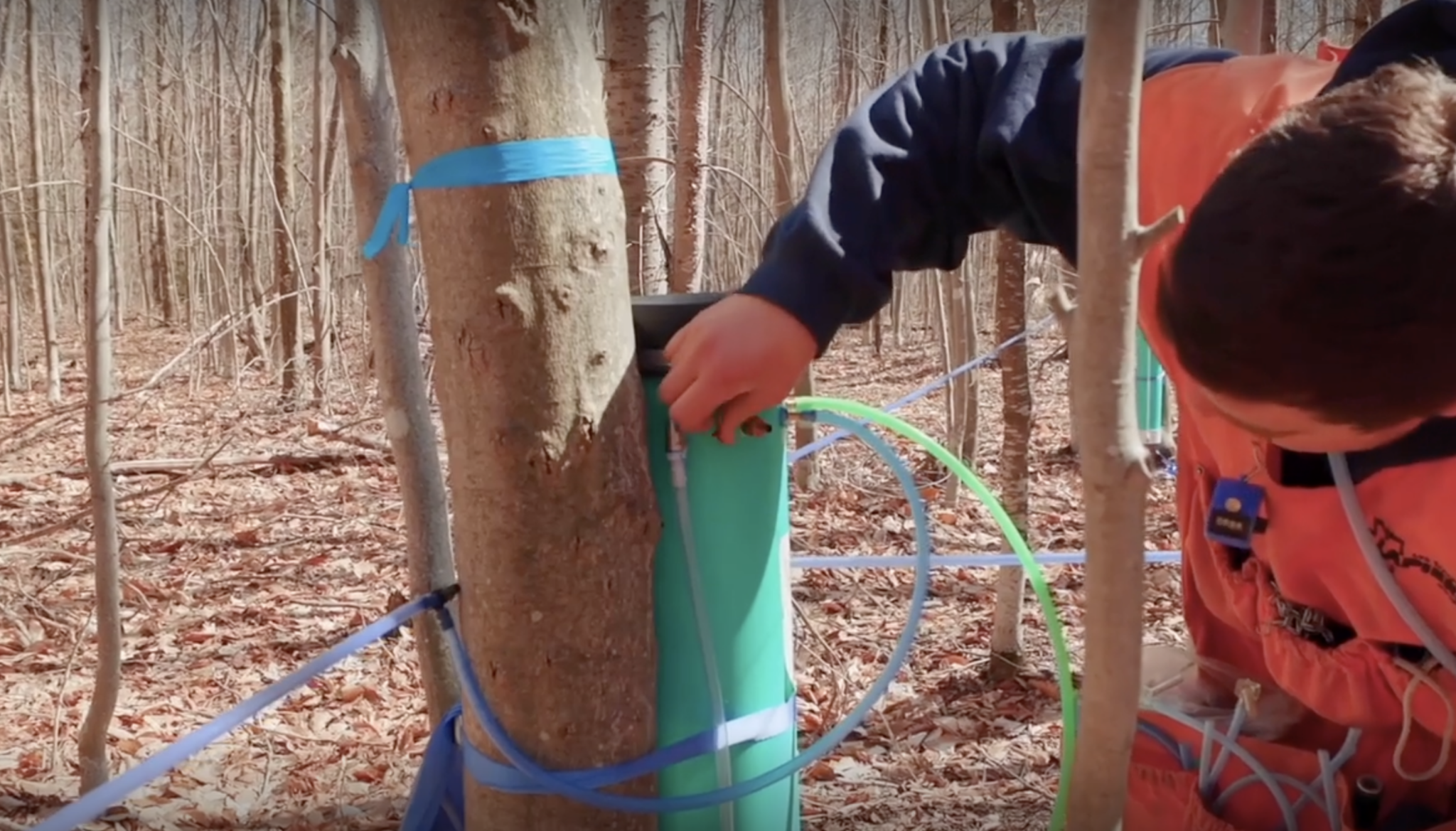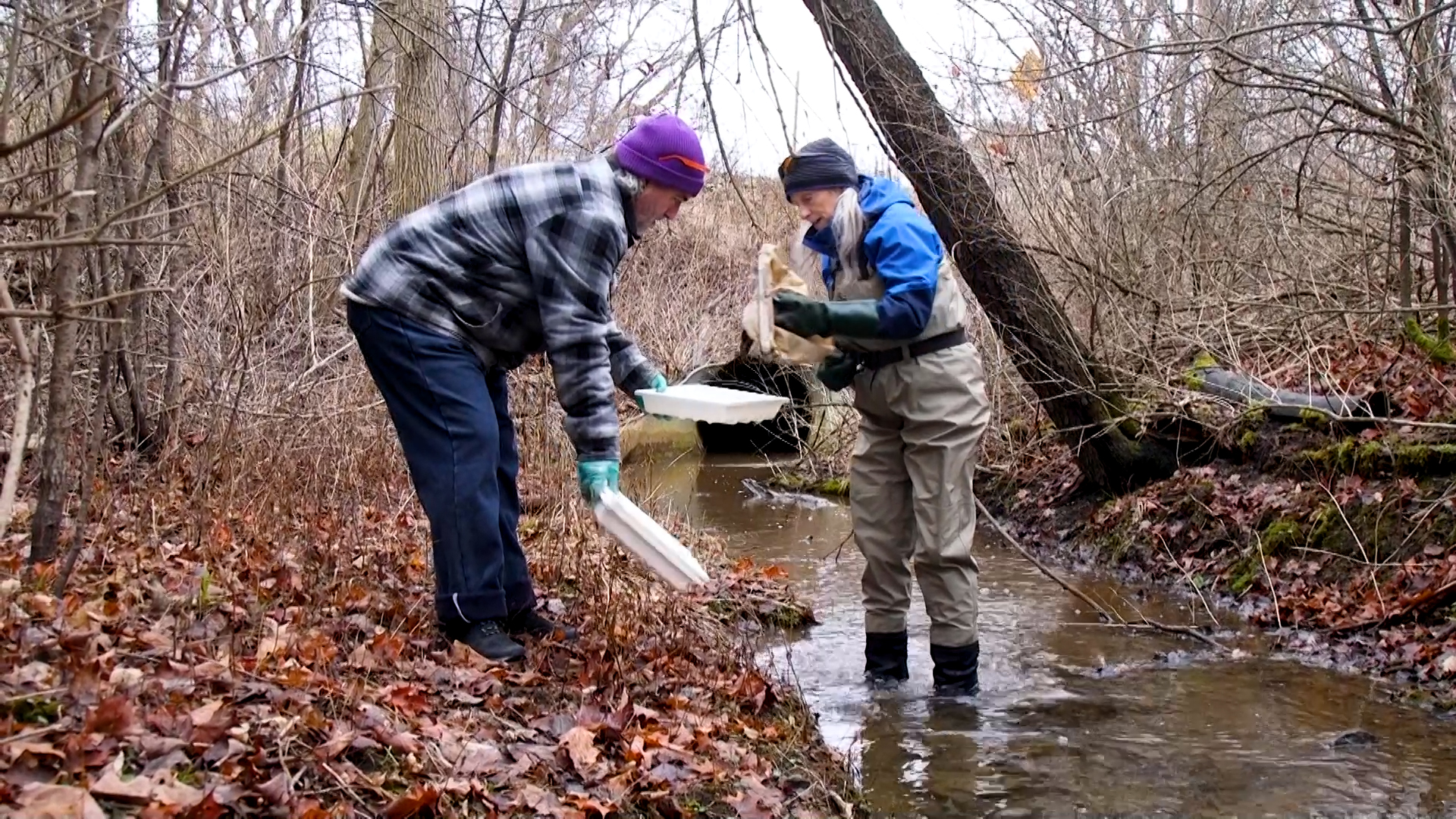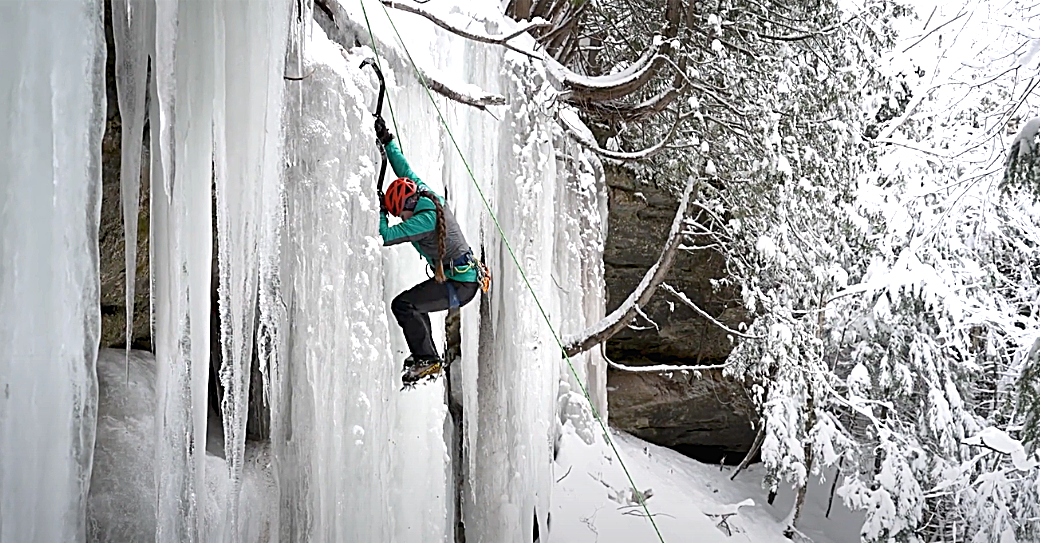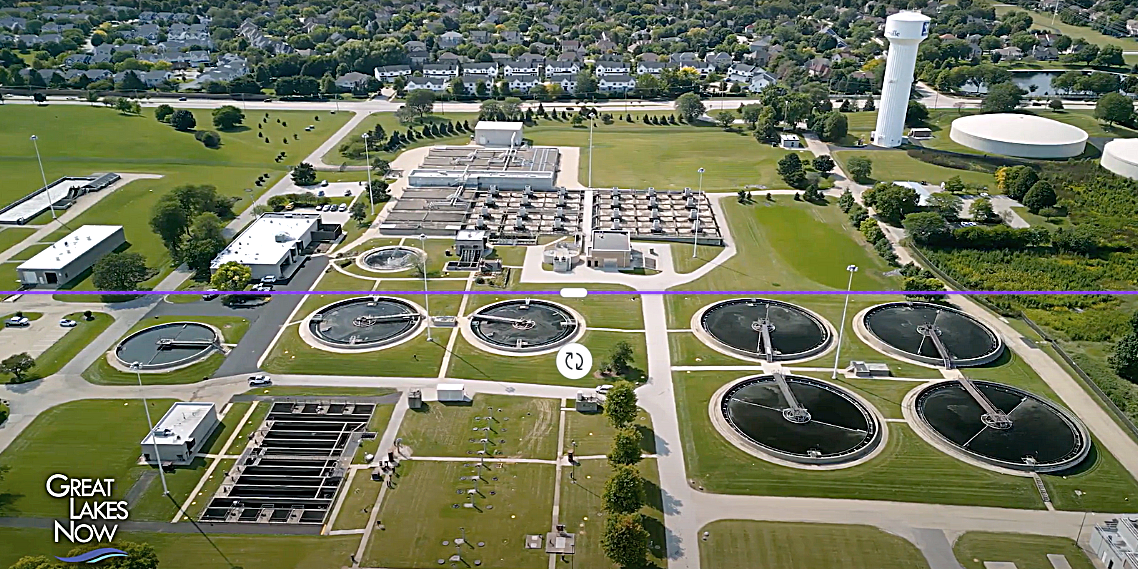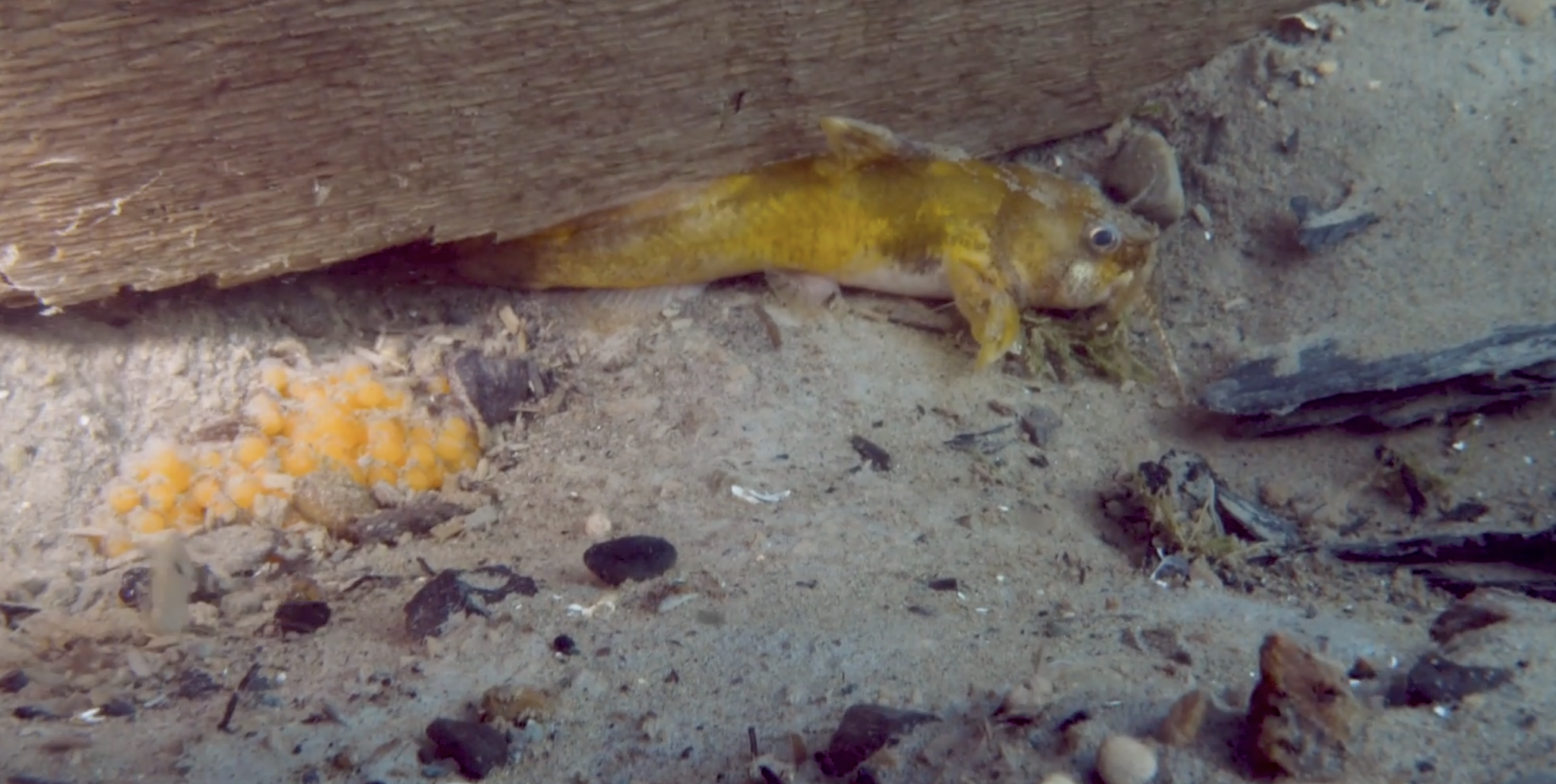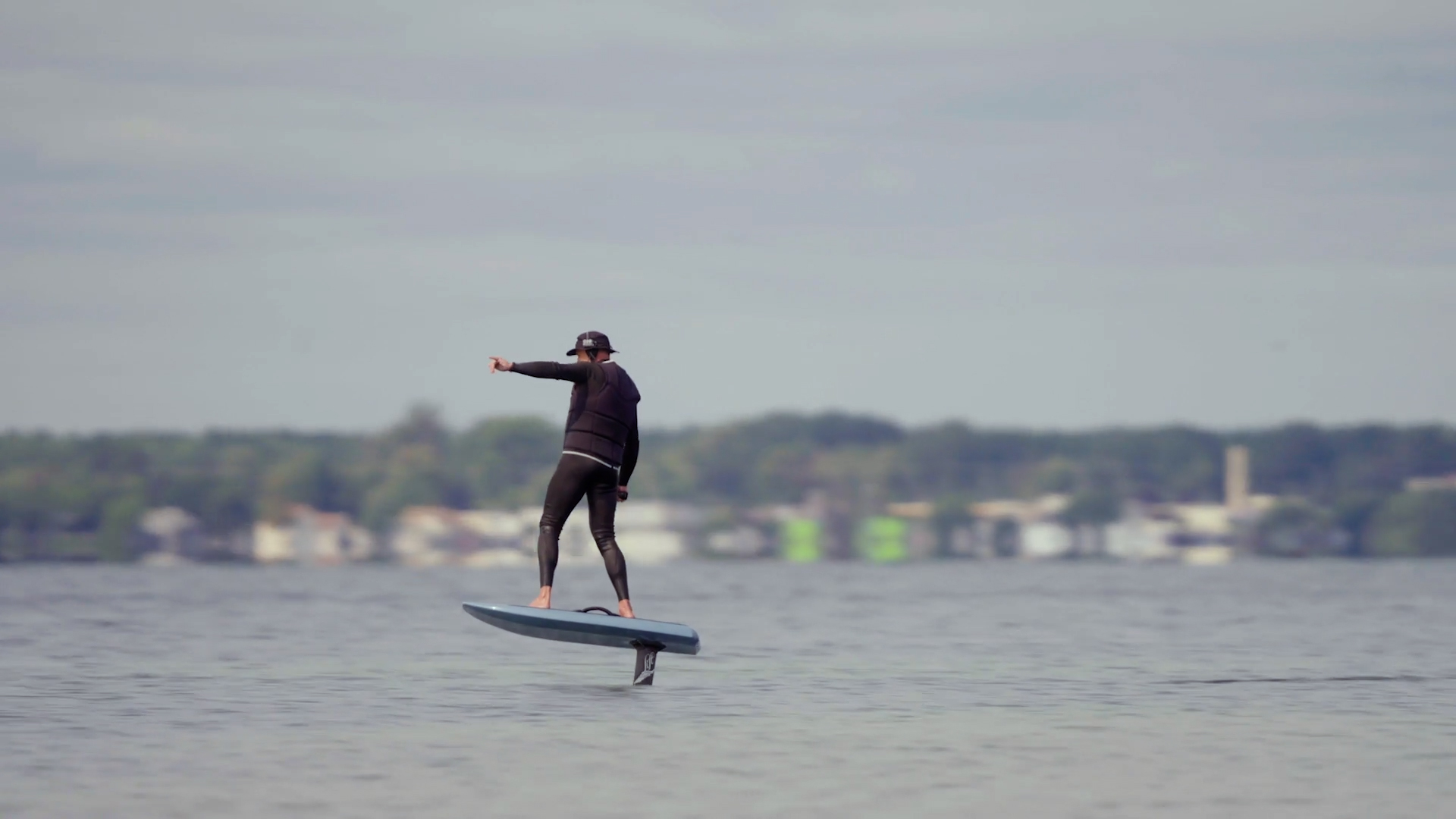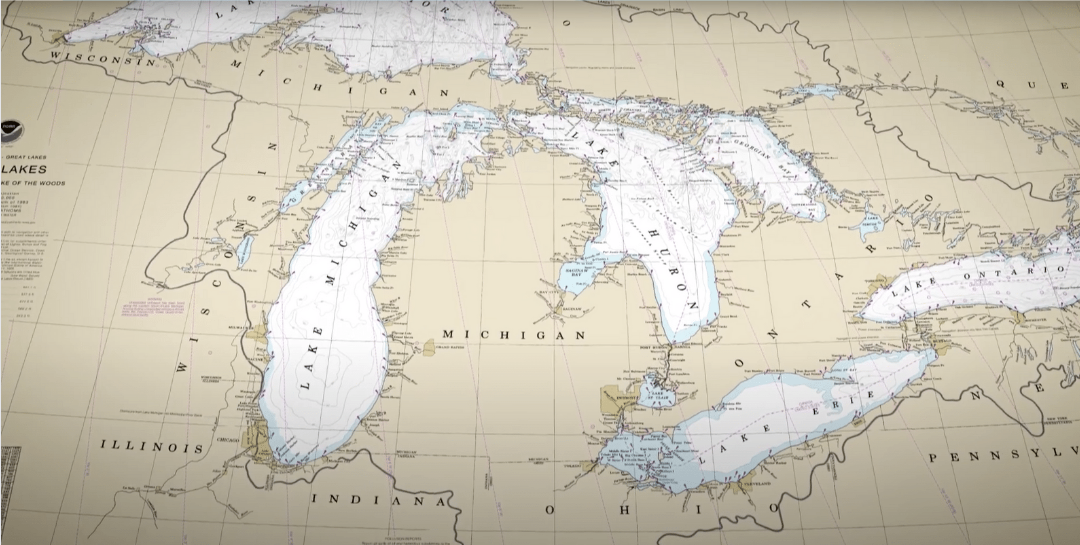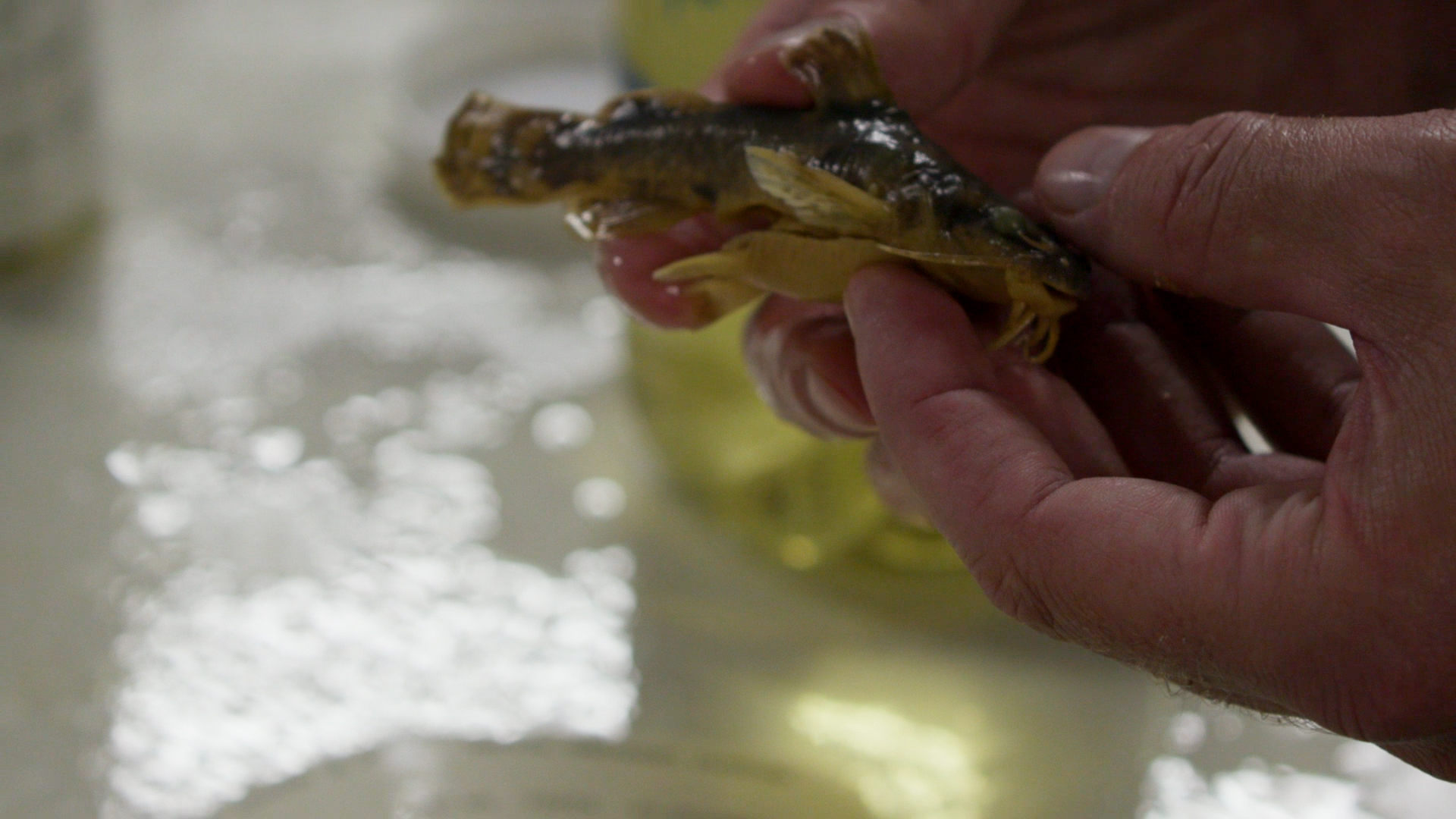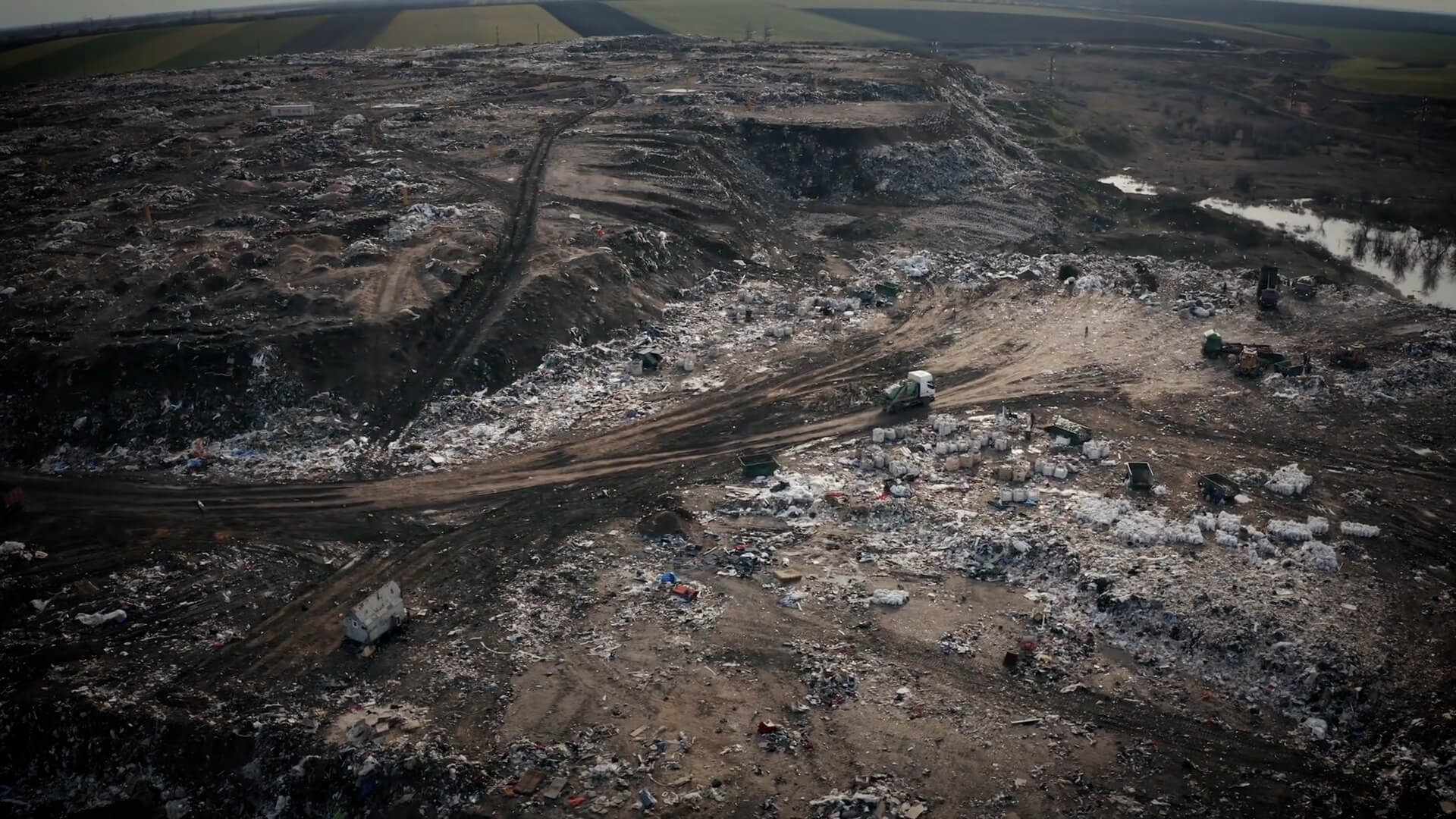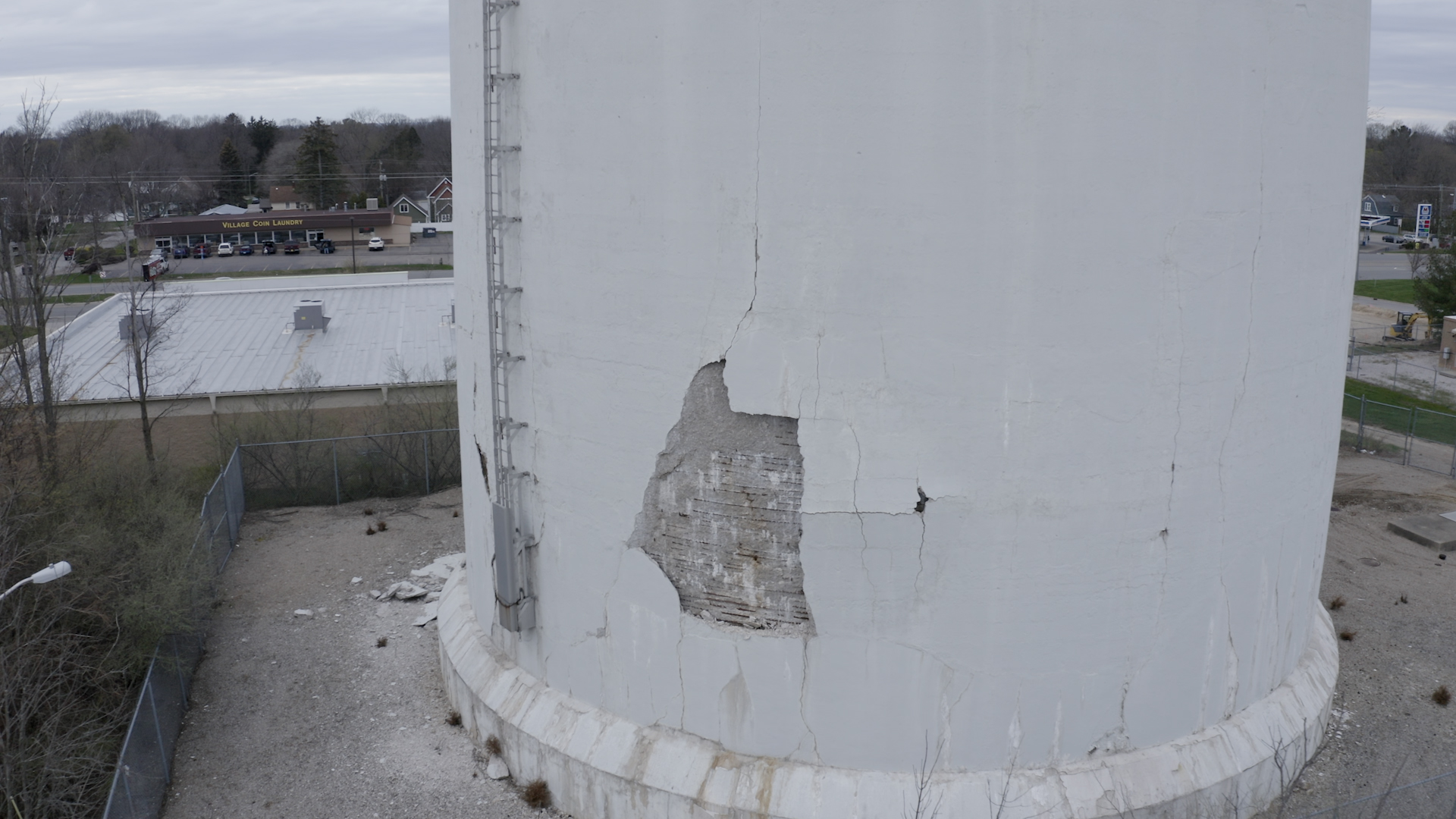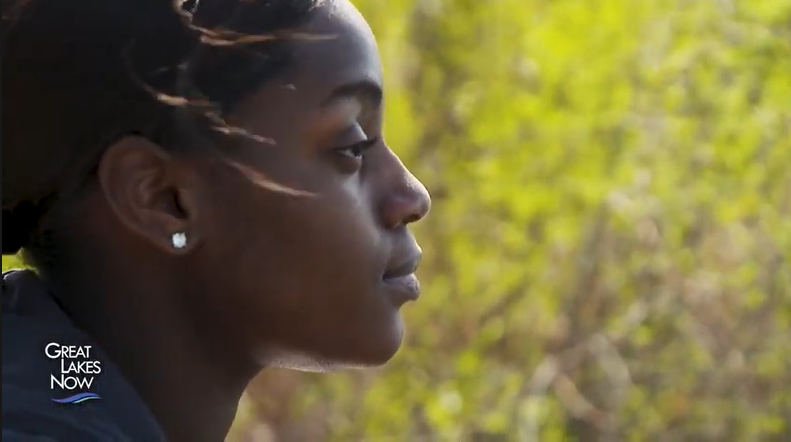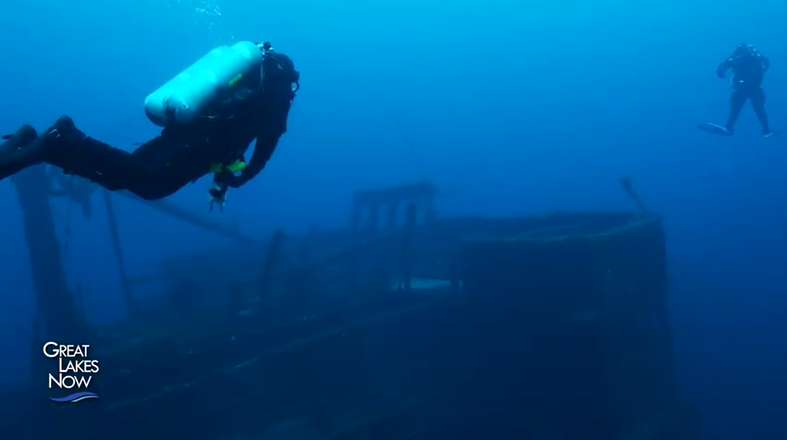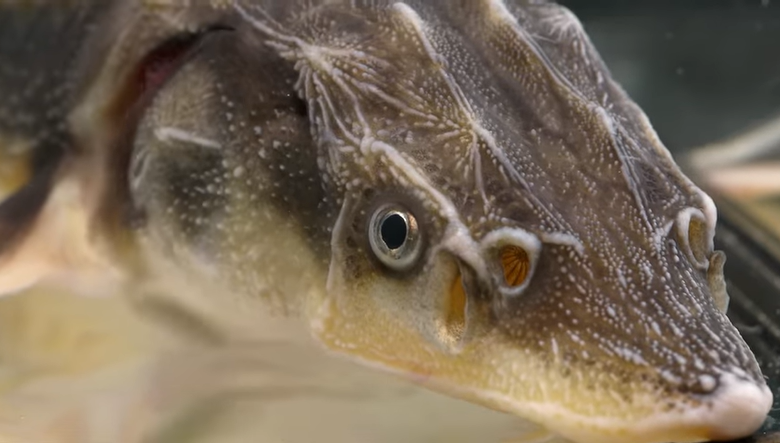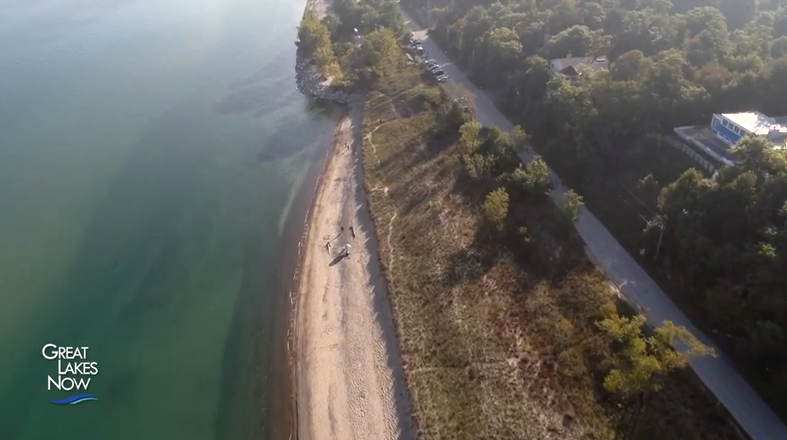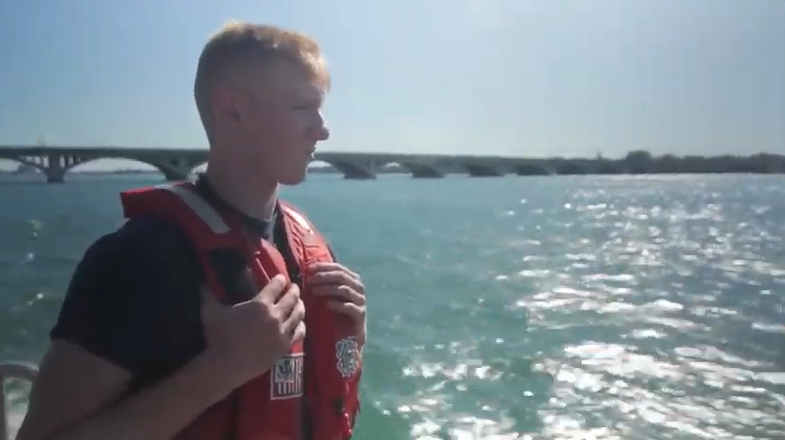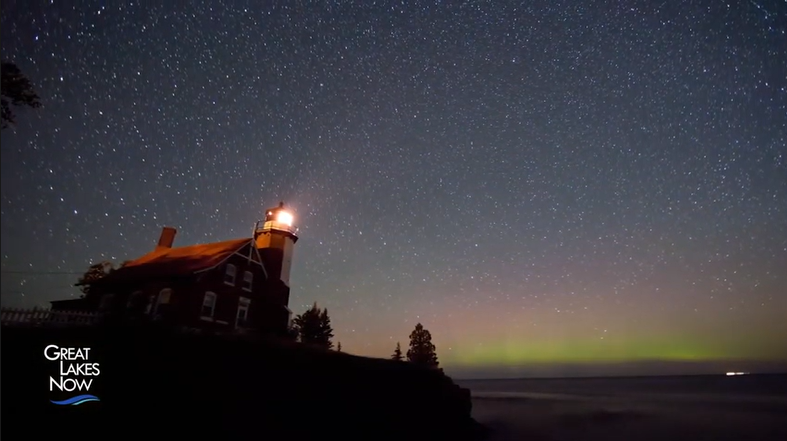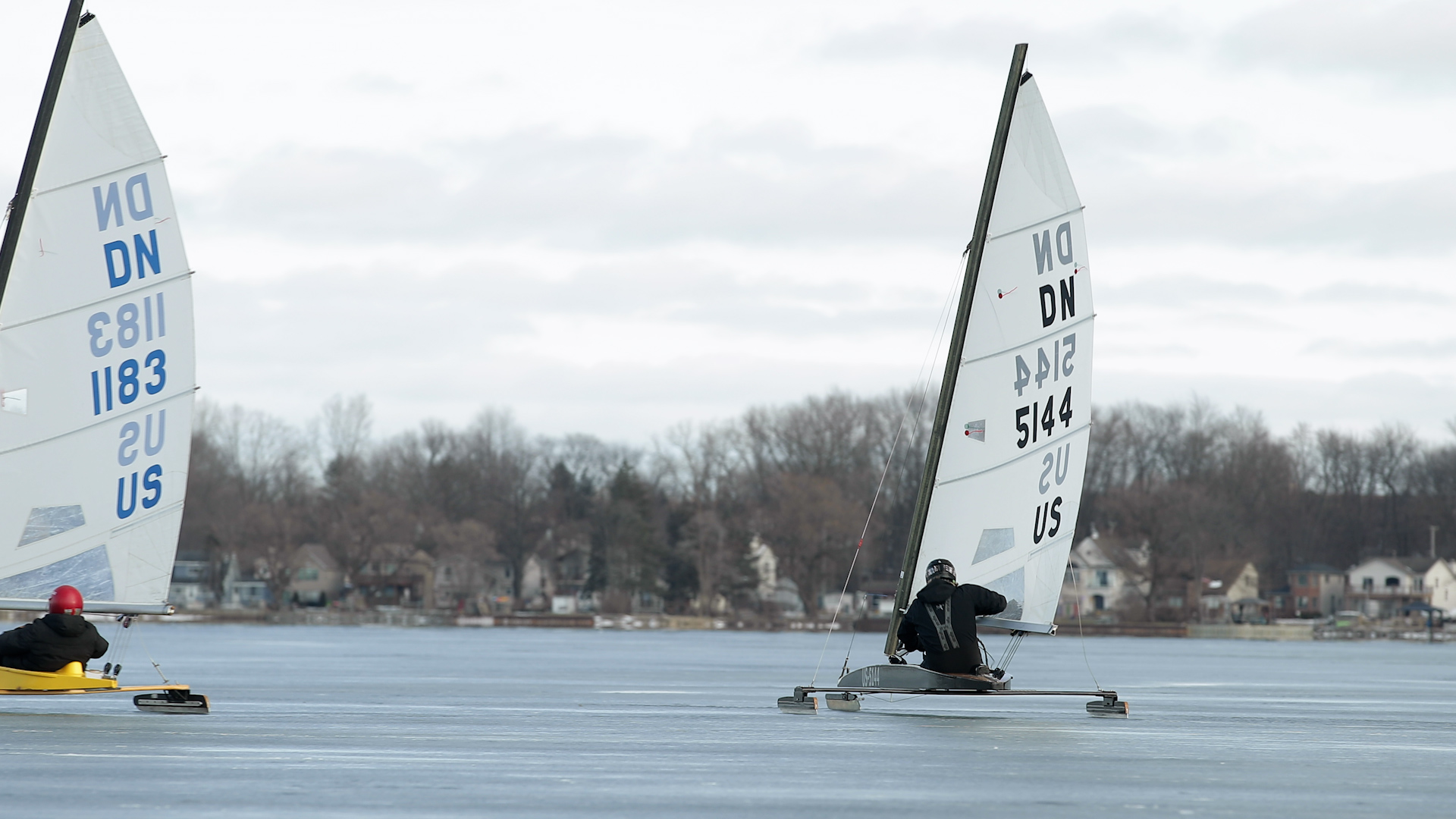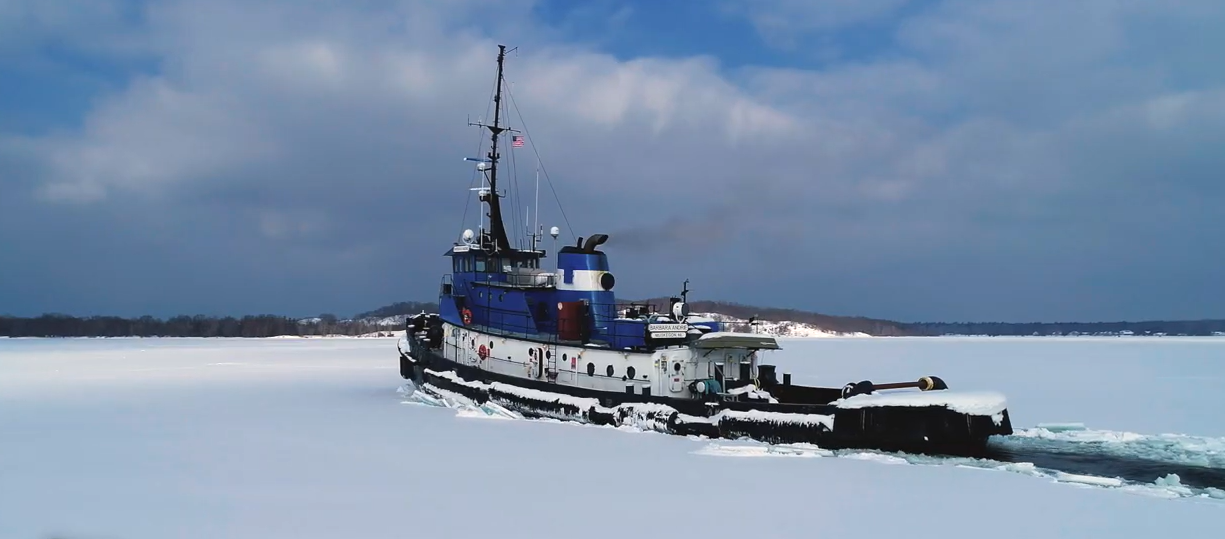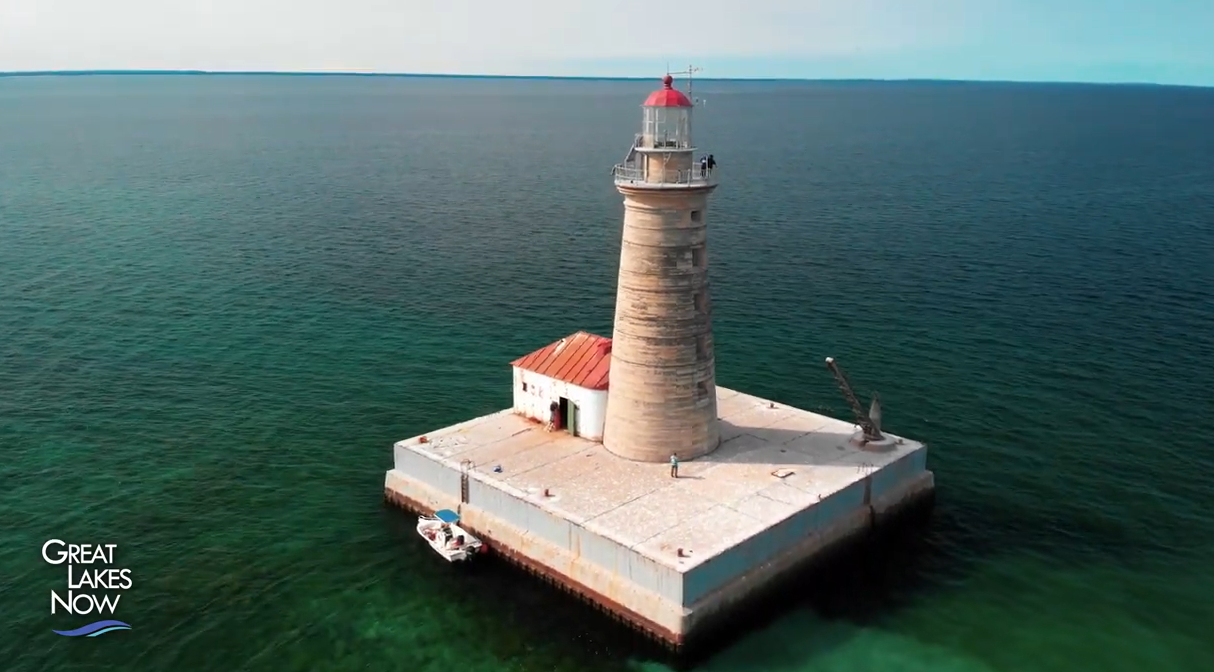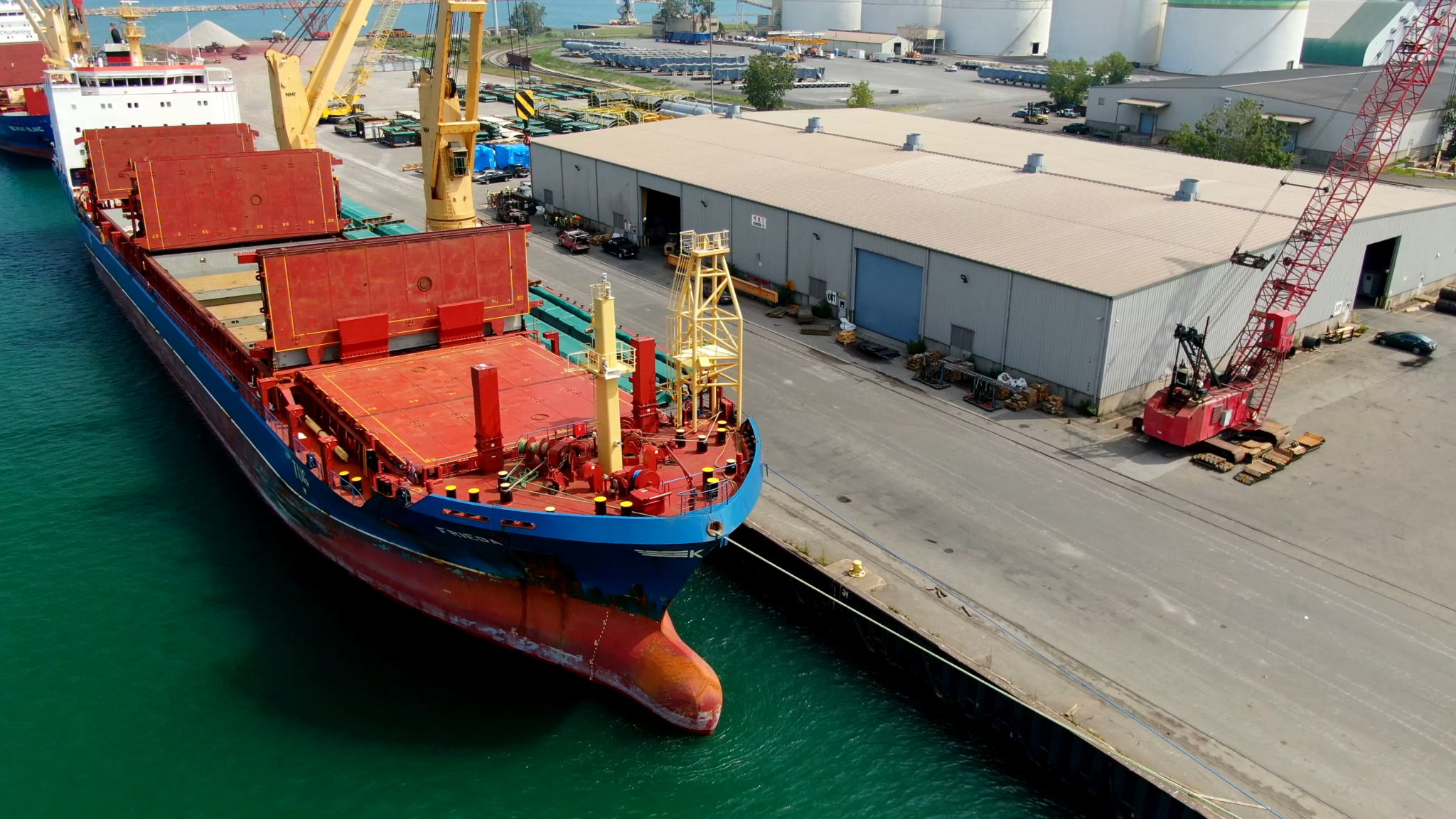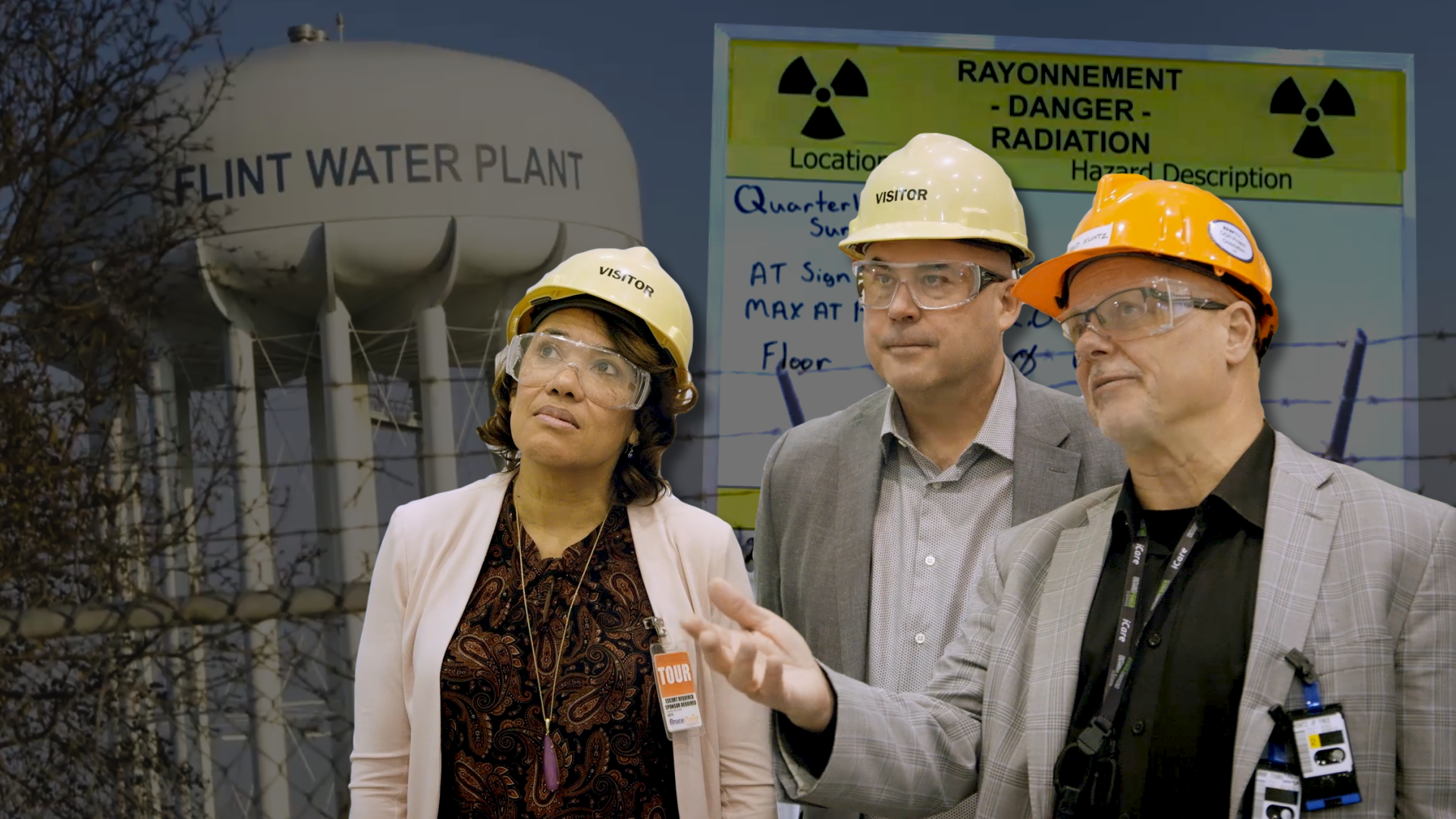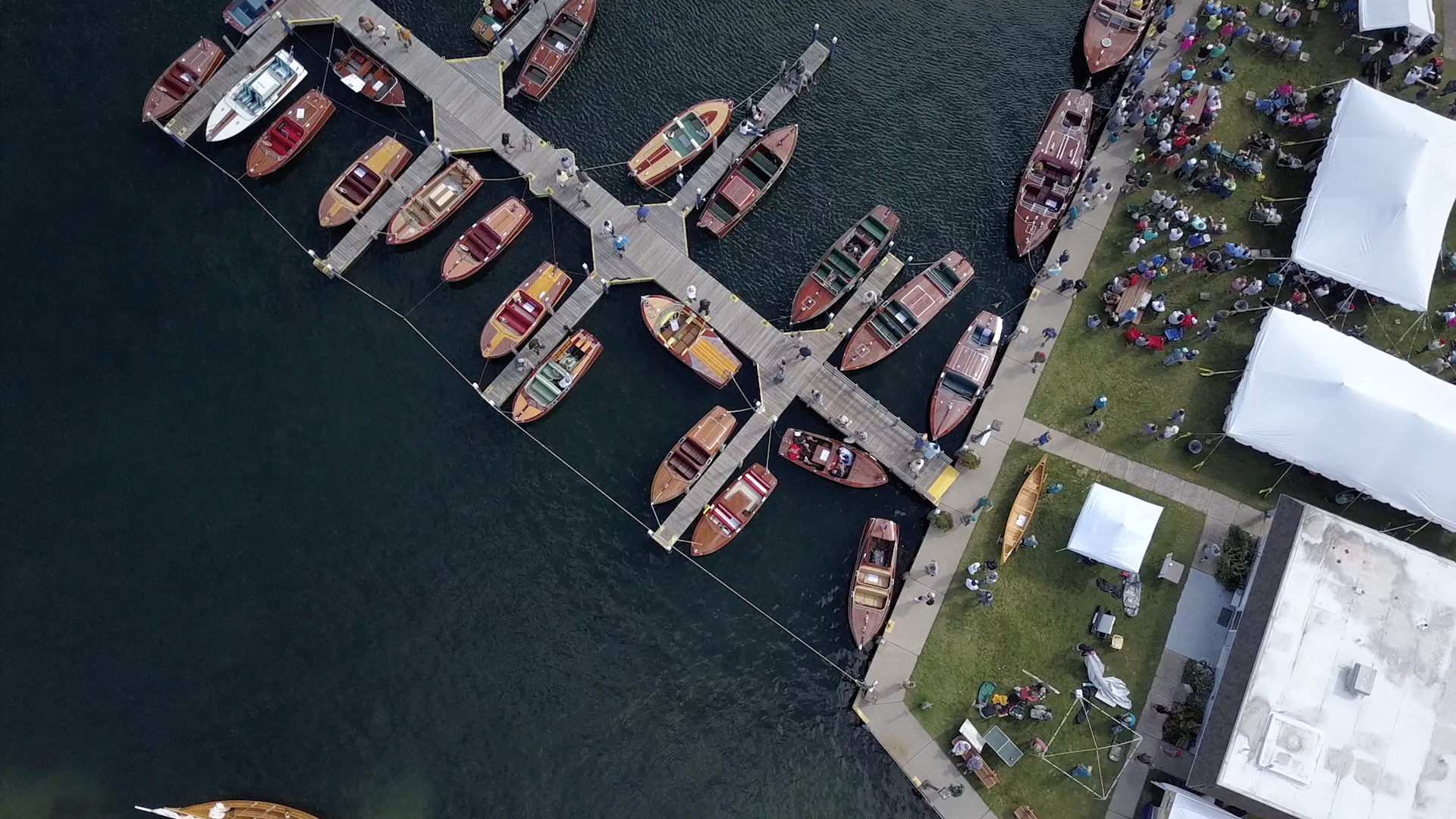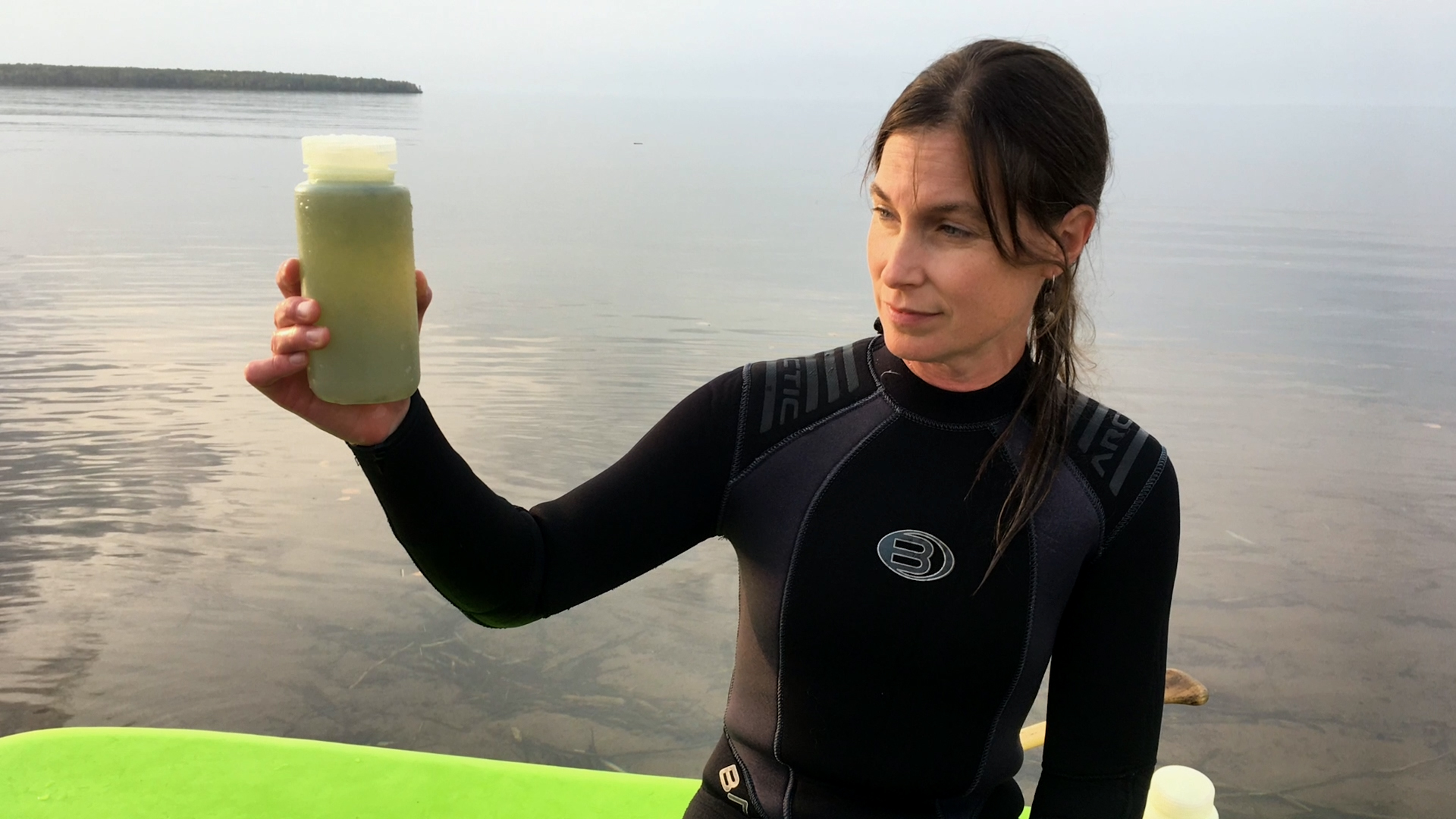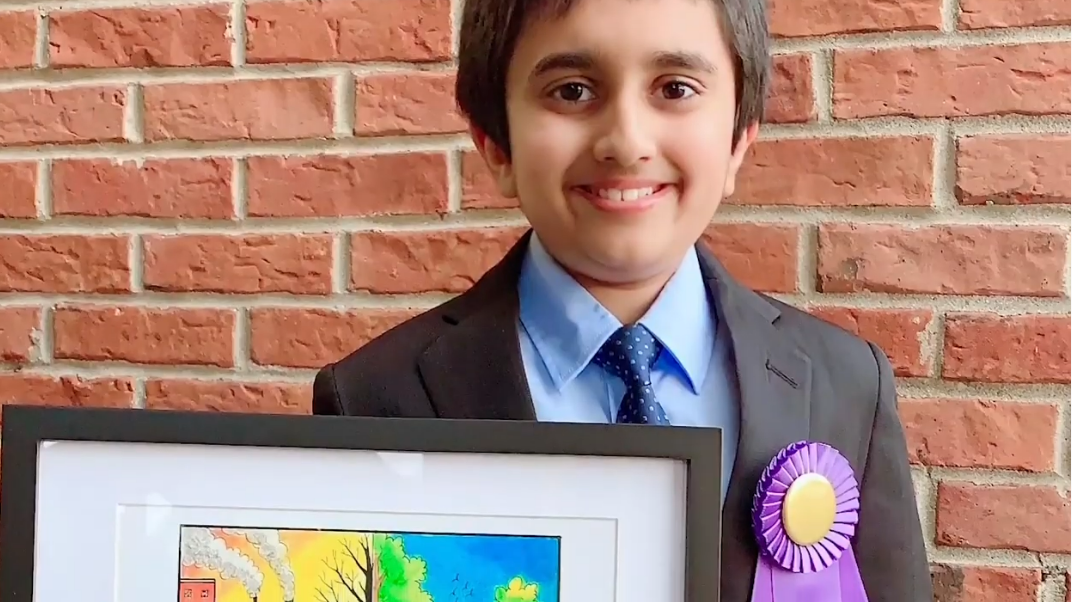Through a magazine-style television program and daily online reports, Great Lakes Now offers in-depth coverage of news, issues, events and developments affecting the lakes and the communities that depend on them while capturing the character and culture of the region.
We’ve partnered with Great Lakes Now to bring middle school and high school teachers monthly lesson plans featuring timely ways to teach our most cherished waterways. Learn about scientific processes as they relate to the Great Lakes region as a whole with videos, activities, and more.
Visit GreatLakesNow.org for additional resources and more information about the show.
Great Lakes Now Lessons
Explore the phenomenon of shoreline erosion as students learn how bodies of water, like rivers, carve out the landscapes around them, moving and depositing sediment, supporting the aquatic ecosystem, and providing natural and man-made ways to interact with human activities and the environment.
Explore the phenomenon of the moose-wolf population dynamics on Isle Royale as students learn how one of our lesser-known national parks provides a firsthand opportunity to witness biology, ecology, and history in action.
Explore the phenomenon of natural gradients as students learn about how the natural flow of the Great Lakes landscape can provide a smooth path for mountain bike riding.
Explore the phenomenon of erosion as students learn about the diversity of rocks present in the Great Lakes.
Explore the phenomenon of corrosion as students learn about sunken ships in the Great Lakes and the glass-bottomed tour boats that take people to explore them.
Gain insights into the reality of food waste, research efforts in their local communities to combat it, and conduct an experiment to investigate the impact of food storage methods on food waste.
Explore the phenomenon of shipbreaking, including how the technique of breaking down freighters allows us to recycle the materials and parts of the ship for other uses.
Explore the phase changes associated with water going between the liquid and solid state in order to learn about the formation of ice that is climbable, the melt patterns of ice, and how salinity affects ice melting
Explore the phase changes associated with water going between the liquid and solid state in order to learn about the formation of ice that is climbable, the melt patterns of ice, and how salinity affects ice melting
Explore the phase changes associated with water going between the liquid and solid state in order to learn about the formation of ice that is climbable, the melt patterns of ice, and how salinity affects ice melting
explore the phenomenon of water pollution from combined sewer systems in the Great Lakes by learning about the smart sewer technology developed at Notre Dame and implemented in South Bend, IN.
Explore the phenomenon of venomous fish in the Great Lakes by learning about the Northern Madtoms.
Explore the sport of eFoiling and how Newtonian physics can be used to explain the phenomenon of the surfboard moving on the Great Lakes.
Explore the phenomenon of sound waves underwater used to map landforms and how modern technology is helping update the maps of the terrain beneath the Great Lakes.
Explore the phenomenon of biodiversity in the Great Lakes and the efforts one museum in Ontario, Canada has taken to catalog it.
Explore the phenomenon of coal ash contamination in groundwater and the threat it poses to Lake Michigan and other areas of the Great Lakes waterways.
This lesson will explore the phenomenon of salamander migration — across a main road — in Presque Isle Park near Lake Superior [...]
This lesson will explore the phenomenon of invasive species in the Great Lakes, specifically the sea lamprey, to help students [...]
Based on an independent project by the Great Lakes News Collaborative to better understand the real cost of water, this [...]
Intern Brionne Davis helped produce a "video diary" for release on Earth Day in advance of the Spring Clean Up on Belle Isle in Detroit.
The Great Lakes only national marine sanctuary brings underwater history up close. Whether you’re in a glass-bottomed boat, looking down from a kayak, or diving underwater, the shipwrecks at the Thunder Bay National Marine Sanctuary give you a haunting look at the past.
A partnership of the John G. Shedd Aquarium’s Kayak for Conservation program and the Urban Rivers organization has created new “floating” islands to replace the habitat and give citizen scientists an opportunity to help with the project and its research. These artificial “islands” are anchored to the river’s edge and bottom, providing a base for plant species to grow and places for fish to spawn and grow. Turtles and birds also find food and shelter among the grasses.
Did you know that over 10,000 tons of plastics enters the Great Lakes every year? Researchers in New York have been looking into plastics pollution in the Great Lakes as they try to grasp the scope and look for possible solutions.
A bald eagle was spotted acting unusual. It turns out that it had severe lead poisoning. Lead poisoning for eagles seems to be more of a consequence of coexisting with humans. Rather than getting shot or consuming the lead directly, the eagles get the lead poisoning from eating fish that have swallowed lead fishing tackle or deer and other game shot with lead bullets.
Algae is so important to our region, but when algae grows extremely fast it's called a bloom. Most of the time they are harmless, but sometimes they can make the water undrinkable, and when thirty-five million people get their drinking water from the Great Lakes Region, that's a problem.
They may start small, but due to restoration, they become very, very big. Great Lakes Now visits the Toldeo Zoo to see Lake Sturgeon. Lake Sturgeon in the Maumee River in Toledo, OH are one of the biggest fish in the Great Lakes Region, and grow up to 8 feet long.
As the Indiana Dunes area transitions from National Lakeshore to National Park, more visitors are enjoying its beaches and trails. Environmental threats may be increasing too.
From a station on Belle Isle, U.S. Coast Guard boats patrol the Detroit River from Lake St. Clair to Lake Erie. Offer work in partnership with Canadian authorities since this is an international waterway. Go along and see how they ensure boating safety and hear about search-and-rescue and border protection efforts.
When it comes to seeing and photographing the northern lights, the Great Lakes region is one of the best destinations in the lower 48. Photographer Shawn Malone has won awards for her night sky photography. She and Adler Planetarium’s Nick Lake explains what to look for and what to avoid when viewing and photographing the skies.
Explore the phenomenon of fungal networks in the city of Crystal Falls, MI to help students learn some of the [...]
This lesson will explore the phenomenon of wind in the winter through the pastime of ice boating to learn about [...]
This lesson will explore the phenomenon of ice cover as students learn about ways that winter is “shrinking” in the [...]
The Spectacle Reef Lighthouse sits 17 miles from the mainland in the Straits of Mackinac. Built in 1869, it became [...]
This lesson will expose students to the science and engineering practice of developing and using models. Through an exploration of [...]
This lesson will provide students opportunities to build perspective and empathy as they explore multiple points of view on a [...]
This lesson will introduce students to the phenomena of buoyancy and water displacement by helping them understand why a boat [...]
Explore the phenomenon of eutrophication by learning the reasons behind the novel algal blooms observed in Lake Superior, the impact [...]
Great Lakes Now Host Ward Detwiler recently judged the Oakland County Water Resources Commissioner's Kids Clean Water Calendar Contest. Here's [...]

